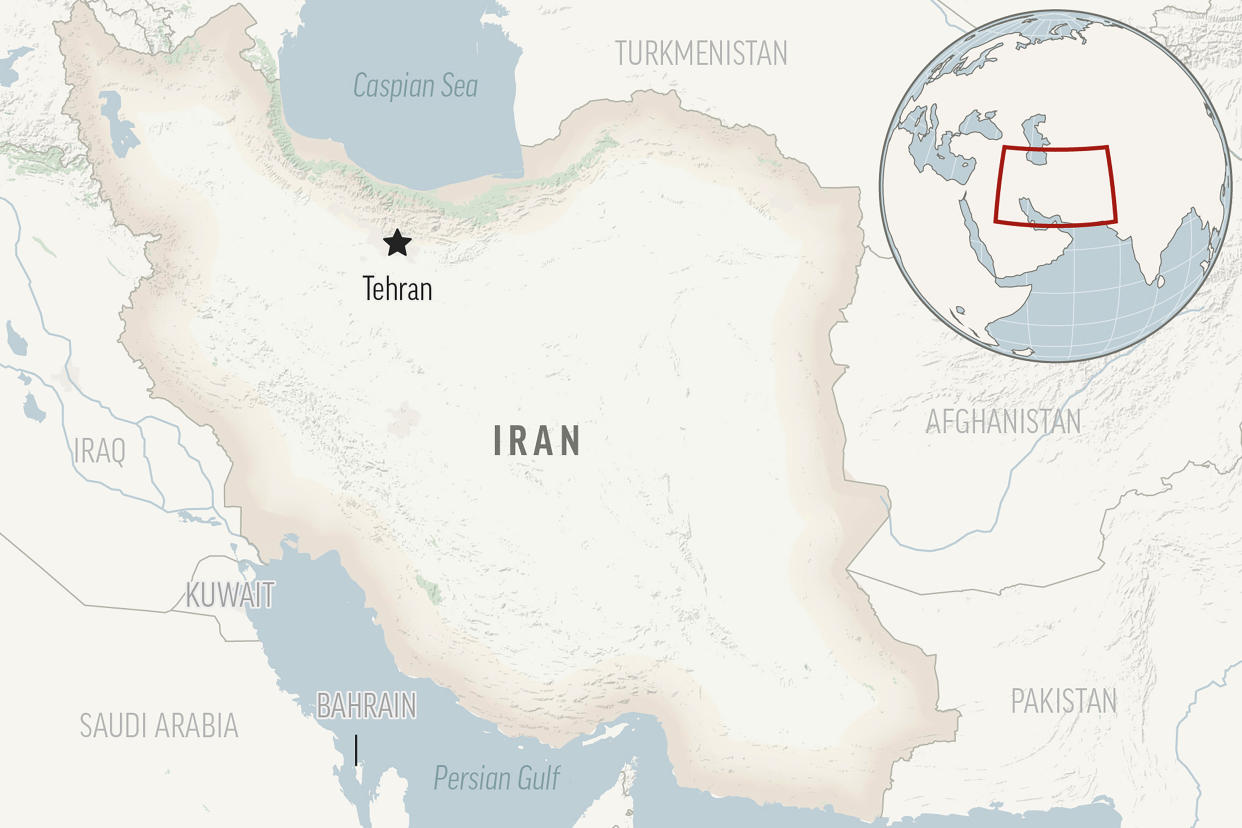Iran calls 84% uranium enrichment allegation a 'conspiracy'

DUBAI, United Arab Emirates (AP) — Iranian state television on Friday offered an extended defense against an accusation attributed to international inspectors that it enriched uranium to 84% purity, with an official calling it part of a “conspiracy” against Tehran amid tensions over its nuclear program.
The comments by Behrouz Kamalvandi, a spokesman for Iran's civilian nuclear program, sought to portray any detection of uranium particles enriched to that level as a momentary side effect of trying to reach a finished product of 60% purity — which Tehran already has announced it is producing.
However, uranium at 84% is nearly at weapons-grade levels of 90% — meaning any stockpile of that material could be quickly used to produce an atomic bomb if Iran chooses. Tehran has long insisted its program is for peaceful purposes, though the International Atomic Energy Agency, Western intelligence agencies and nonproliferation experts say Iran pursued a secret nuclear weapons program up until 2003.
The allegation that IAEA inspectors found 84% enriched uranium threatens to further escalate tensions between Iran and the West. Already, Israel's recently reinstalled Prime Minister Benjamin Netanyahu has threatened military actions against Tehran. Meanwhile, Iran faced continued unrest Friday amid months of protests.
Bloomberg first reported Sunday that inspectors had detected uranium particles enriched up to 84%. The IAEA, a United Nations nuclear agency based in Vienna, has not denied the report, saying only “that the IAEA is discussing with Iran the results of recent agency verification activities.”
In an interview with Iranian state television's English-language arm, Press TV, highlighted on Friday, Kamalvandi dismissed what inspectors may have found as “a particle of an atom that cannot be seen even under a microscope." He described Iran's uranium centrifuge cascades as producing particles at varying purity that later form a final product of 60% enriched uranium.
“It doesn’t matter because the end product is what matters,” Kamalvandi said. “If we really want to enrich 20% more, we will announce it very easily. So it is clear that there is a conspiracy here.”
Iran's 2015 nuclear deal limited Tehran's uranium enrichment to 3.67% — enough to fuel a nuclear power plant. The United States unilaterally withdrew from the accord in 2018. Since then, a shadow war between Israel and Iran has erupted across the wider Middle East.
Iran now produces uranium enriched to 60% purity — a level for which nonproliferation experts already say Tehran has no civilian use. Any accusation of enrichment higher than that further ratchets up tension over the program, something Iran has appeared to acknowledge through a series of comments this week about the allegation attributed to the international inspectors.
However, many questions remain over the allegations attributed to IAEA inspectors and Iran's explanation.
"There are variances in enrichment levels but usually not the the degree Iran is claiming," said Daryl G. Kimball, the executive director of the Washington-based Arms Control Association. “Until the IAEA provides more information, including on the sampling and the methods of their analysis, we cannot be sure.”
“It may also be possible that Iran is testing the political response to enrichment of very small amounts of uranium at higher levels, and closer to bomb grade, or, less likely, they got caught experimenting with new centrifuge cascade configurations and how quickly they could enrich uranium to higher levels.”
While the IAEA’s director-general has warned Iran now has enough uranium to produce “several” nuclear bombs if it chooses, it likely would take months more to build a weapon and potentially miniaturize it to put on a missile. As recently as last March, the U.S. intelligence community assessed Iran “is not currently undertaking the key nuclear weapons-development activities that we judge would be necessary to produce a nuclear device.”
Meanwhile late Thursday night, online videos showed explosions and anti-aircraft fire in Karaj, a city about 40 kilometers (25 miles) northwest of the Iranian capital, Tehran. Tracer rounds lit up the night sky, with the thud of blasts heard in the videos.
Iran’s state-run IRNA news agency later attributed the activity to an unannounced drill at a base for the paramilitary Revolutionary Guard. In 2021, a suspected Israeli strike drone damaged a centrifuge assembly facility in Karaj.
Also Friday, online videos showed weekly protests resuming around the city of Zahedan in Iran's restive southeastern province of Sistan and Baluchestan. Internet monitoring group NetBlocks reported “significant” disruptions to the internet around Zahedan as a prominent Sunni cleric issued a statement saying a live stream of his Friday sermon was disrupted.
In his sermon, the cleric Abdolhamid Ismaeelzahi told those in Iran's government “if you cannot solve the people's problems, leave and let someone come who can," activists said.

